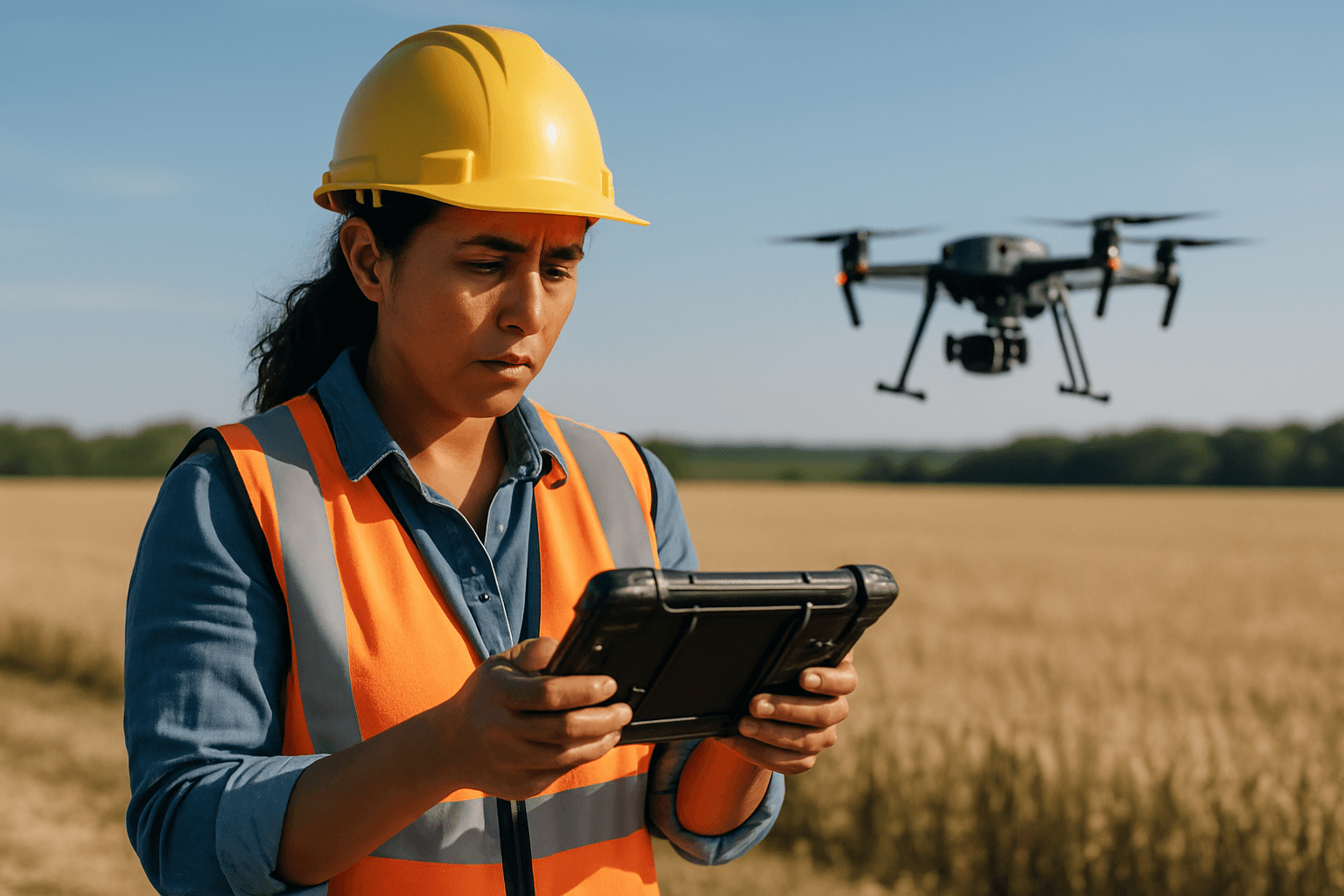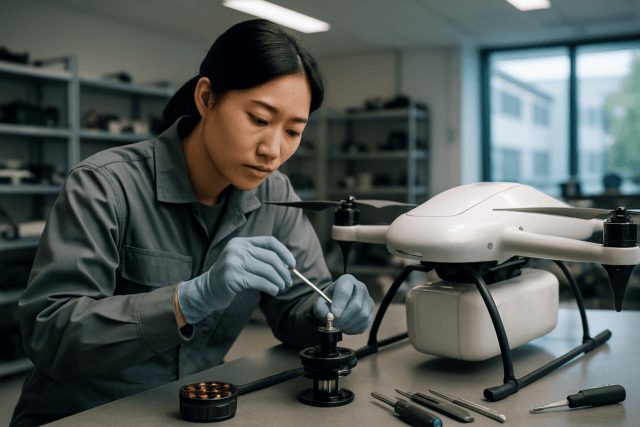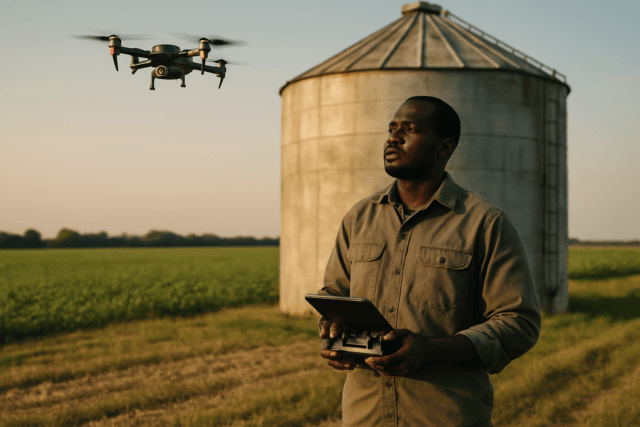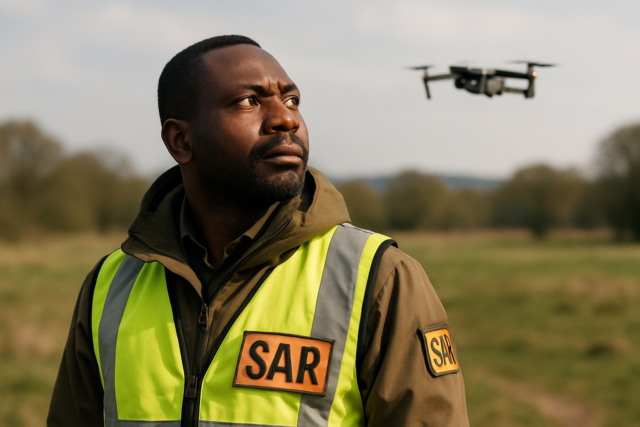The commercial drone industry is a dynamic frontier, constantly evolving with technological advancements, regulatory shifts, and innovative applications. From managing complex airspace to protecting agricultural yields, Unmanned Aerial Systems (UAS) are proving their versatility across various sectors. However, this growth also introduces challenges, such as the reliability of underlying digital infrastructure, which demands robust solutions and forward-thinking strategies. This article explores recent significant developments, including the impact of major cloud outages, the ongoing implementation of U-Space in Europe, and the creative use of drones for deer deterrence.
The Critical Role of Cloud Infrastructure: Lessons from AWS Outages
Modern commercial drone operations are heavily reliant on cloud services for everything from flight planning and data processing to real-time telemetry and artificial intelligence (AI) analytics. This deep integration means that disruptions to major cloud providers, such as Amazon Web Services (AWS), can have significant ripple effects across the drone ecosystem.
Understanding the Impact of Cloud Disruptions
Recent widespread AWS outages have highlighted the vulnerabilities inherent in this dependence. Such incidents, affecting millions of websites and applications globally, can lead to authentication errors, data routing failures, and difficulties for pilots logging into systems or teams uploading imagery for processing. While not always grounding drones entirely, these outages can limit critical connected functions. For instance, public safety teams using drones for first response missions rely on live video and dispatch systems hosted online; a service interruption could delay streaming or restrict remote access to mission data. Similarly, in industries like construction and energy, upload delays could slow data processing and project timelines.
Building Resilience in Drone Operations
The frequency of cloud outages, potentially increasing with the rapid expansion of AI, underscores the need for enhanced resilience in the commercial drone industry’s digital infrastructure. Experts emphasize that drone ecosystems are closely linked to global internet stability. To mitigate risks, drone service providers must consider strategies such as building redundancy into their systems and developing capabilities for local control. This ensures that even if cloud systems falter, essential operations can continue, safeguarding both convenience and operational safety.
U-Space Implementation in Europe: Harmonizing the Skies
The increasing density of drone traffic necessitates sophisticated airspace management systems. In Europe, U-Space is the ambitious initiative designed to safely and efficiently integrate a large number of unmanned aircraft into the existing aviation system, particularly in urban and other complex environments.
What is U-Space?
U-Space is a set of services and procedures built on high levels of digitalization and automation, aiming to provide safe, efficient, and secure access to airspace for numerous unmanned aircraft systems (UAS), including those operating beyond visual line of sight (BVLOS). It is the European counterpart to the global Unmanned Traffic Management (UTM) concept. The objectives of U-Space include mitigating the risk of collisions with both manned aircraft and other UAS, enabling efficient and fair airspace usage, and facilitating dense and complex drone operations.
Regulatory Framework and Implementation Status
The U-Space regulatory framework is primarily constituted by Regulation (EU) 2021/664, which lays down rules for UAS operations, their integration into the aviation system, and the provision of U-Space services. This framework, along with supplementary regulations, entered into force on January 26, 2023, giving it legal existence in the EU and its member states.
The European Union Aviation Safety Agency (EASA) has been instrumental in providing guidance and acceptable means of compliance (AMC) to facilitate harmonized implementation. While the regulatory framework is in place, the actual deployment across Europe shows variable progress. EASA began inspections of Member States’ U-space implementation plans in October 2024, noting that while some are ready, others have made limited progress. Several U-Space service providers are undergoing certification, and national action plans, like Spain’s PANDU, are being developed to promote efficient national deployment.
Innovative Applications: Drones for Deer Deterrence
Beyond infrastructure and regulation, the commercial drone industry is continually discovering novel applications. One such innovative use is the deployment of drones for wildlife management, specifically in deterring deer from agricultural fields and reducing crop damage.
Protecting Crops with Drone Technology
Deer-induced crop damage poses a significant threat to agricultural productivity. Traditional deterrence methods often fall short in terms of scalability and responsiveness. Drones offer a promising solution by combining advanced detection capabilities with effective, non-lethal deterrence mechanisms.
For example, a team of University of Minnesota students developed “FarmGuard’s Multi-Robot Deer Deterrence System.” This system uses a drone equipped with onboard cameras and computer vision algorithms to detect deer in real-time, day or night. Upon detection, it employs deterrents such as lights and speakers. The system also optimizes flight paths for maximum coverage and minimal energy consumption. This innovative approach won the Small Farm Technology award at the Farm Robotics Challenge.
Advanced Detection and Deterrence Mechanisms
Another application involves using thermal imaging cameras on drones to detect deer, particularly fawns, hidden in fields before harvesting. This allows farmers to locate and safely relocate the animals, preventing accidental deaths. In some regions, like Germany, government funding has even been made available for organizations to purchase thermal drones for wildlife protection.
These drone systems often integrate AI for correct identification and can use ultrasonic repellents or specific flight patterns to safely scare animals away. This “animal-friendly” alternative to lethal control helps farmers protect their crops while promoting coexistence with wildlife.
The Future Trajectory of the Commercial Drone Industry
The commercial drone industry stands at a pivotal juncture, marked by rapid technological advancements and evolving operational paradigms. Addressing the vulnerabilities exposed by cloud outages will be crucial for ensuring reliable and secure drone operations as the industry scales. Simultaneously, the continued, harmonized implementation of U-Space in Europe will unlock more complex and widespread drone services, fostering safer and more efficient airspace integration. Finally, the ingenious application of drones for challenges like deer deterrence highlights the immense potential for UAS to provide effective and sustainable solutions across diverse sectors, ultimately shaping a future where drones are an indispensable tool for progress and innovation.





